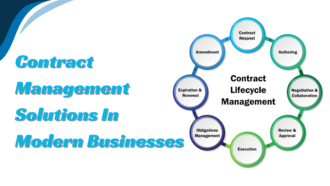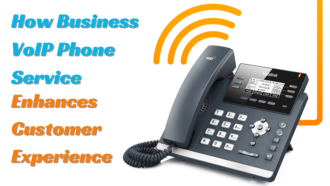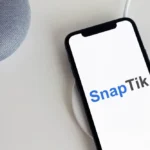Exploring Government Assistance Programs: Can You Really Receive a Free iPhone 8?
Government Assistance Programs provide assistance for citizens unable to support themselves for various reasons, including unemployment or serious health conditions. These benefits may help individuals who find themselves unable to cope on their own financially.
These programs offer assistance through financial, food, and housing assistance programs. It’s essential that individuals understand which programs are available as well as any eligibility requirements associated with each one.
Eligibility Requirements for Free iPhone 8
To be eligible for a free iPhone 8 through the government assistance program, you must:
- Be a U.S. citizen or legal resident
- Have an annual income that is below the poverty line
- Be currently enrolled in a government assistance program, such as Medicaid, food stamps, or housing assistance
- Demonstrate financial need
Temporary Assistance
Many are unwilling to seek government assistance programs for assistance with bills or living costs due to lingering social stigmas; however, seeking these programs could be the key to getting financial help if necessary. Spending the time researching available programs could make all the difference when seeking financial aid for bills or living costs.
Numerous programs provide temporary assistance with expenses like food, housing and energy costs. These state-run programs vary in their eligibility requirements – for instance the Supplemental Nutrition Assistance Program offers monthly cash benefits that you can use to purchase food at stores; others such as Home Energy Assistance Program can assist with energy costs; Lifeline also offers discounted phone and internet service plans.
To qualify for these programs, you must demonstrate that your income falls below a set threshold – usually some percentage of the federal poverty level – with additional state requirements depending on family size and details about combined household income. It’s wise to apply as soon as you need assistance; otherwise, you risk missing out.
New York offers two primary temporary assistance programs, Family Assistance and Safety Net Assistance. Family Assistance provides cash benefits for families with children or pregnant women while Safety Net Assistance caters to single adults or families that meet New York State guidelines.
Food Stamps
The government provides numerous resources to assist those in need with managing their food budgets, such as Supplemental Nutrition Assistance Program (SNAP) in federal offices or different names for state offices, which enable individuals to purchase healthy foods at authorized retailers near them and utilize benefits issued using an EBT card with PIN numbers.
SNAP was an integral program during and after the pandemic. Prior to its widespread implementation in the 1960s and 70s, hunger and malnutrition were common among low-income families in some parts of the country. Furthermore, research shows that income supports such as SNAP can have long-term ramifications for those who receive them.
As the pandemic impacted the economy and households looked to SNAP for assistance, disbursements increased rapidly in 2022. Unfortunately, benefits weren’t sufficient to keep up with food inflation. Therefore, COVID-19 emergency legislation expired at the end of September 2021 without increasing them further.
To determine whether you qualify for government assistance, the easiest way to assess it is to visit a social or welfare service office nearby and apply. When doing so, be ready to show proof of income, citizenship and identity – plus any documents which could prove your eligibility.
Health Care Assistance
There are various government-funded medical financial assistance federal benefit Grants programs that offer aid. This assistance may cover prescription copays, health insurance deductibles, and travel costs related to treatment or pediatric treatments. Participants typically must be permanent residents of the U.S. who can show they don’t have coverage from their health insurer or that certain medications don’t fall under their coverage plan, as well as meeting income criteria and providing documentation of their medical condition.
State health departments and social services agencies can help individuals identify an appropriate program. They may also provide information about other human services programs available such as 2-1-1 which provides referrals to community resources that offer help with daily needs or emergency situations.
As well as government-funded programs, private organisations also exist that can assist with medical costs. Examples include pharmaceutical companies offering low-cost options or samples; cancer charities like Leukaemia & Lymphoma Society which assist patients with out-of-pocket expenses for blood cancer treatments; hospital financial assistance programs known as charity care may help as well – please reach out to your local hospital or state medical assistance office for more details, while Medicare’s website can also provide coverage information.
Housing Assistance
Housing assistance programs for low-income families and individuals vary depending on where you live, providing money to assist with rent payments and utilities bills or any costs related to owning or renting a home. State and local governments distribute these programs locally.
The Section 8 Housing Choice Voucher, more commonly known by its acronym “Section 8”, is the go-to government program for rental assistance costs. This voucher helps make market rate housing affordable for eligible families by supplementing rent payments. To determine eligibility, a local Public Housing Agency (PHA) collects information regarding family income and assets before setting a “payment standard”, the maximum amount that any family must contribute towards rent and utilities costs; families then must select units whose rent falls below this standard amount.
Rent assistance may also be available under various government programs, including City FHEPS ACS Housing Subsidy for Families with Active ACS Cases; Special Eviction Prevention Supplement; Living In Communities 1 through 5, which have recently been combined into CityFHEPS.
Due to high demand, rental assistance programs often have long waiting lists. Individuals in search of rental assistance should reach out directly to their Public Housing Authority and inquire if a waiting list and application process exist in their locality.

















